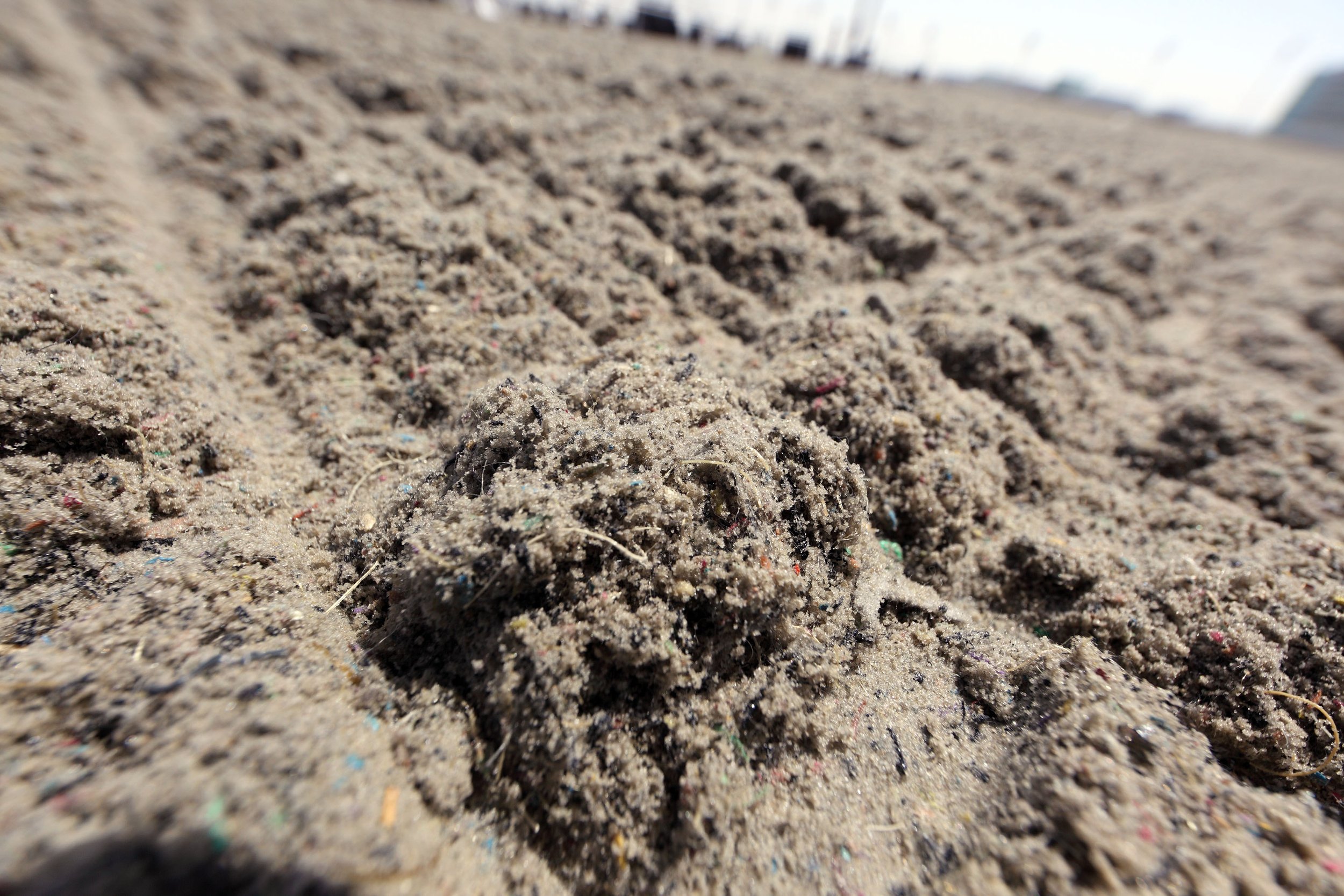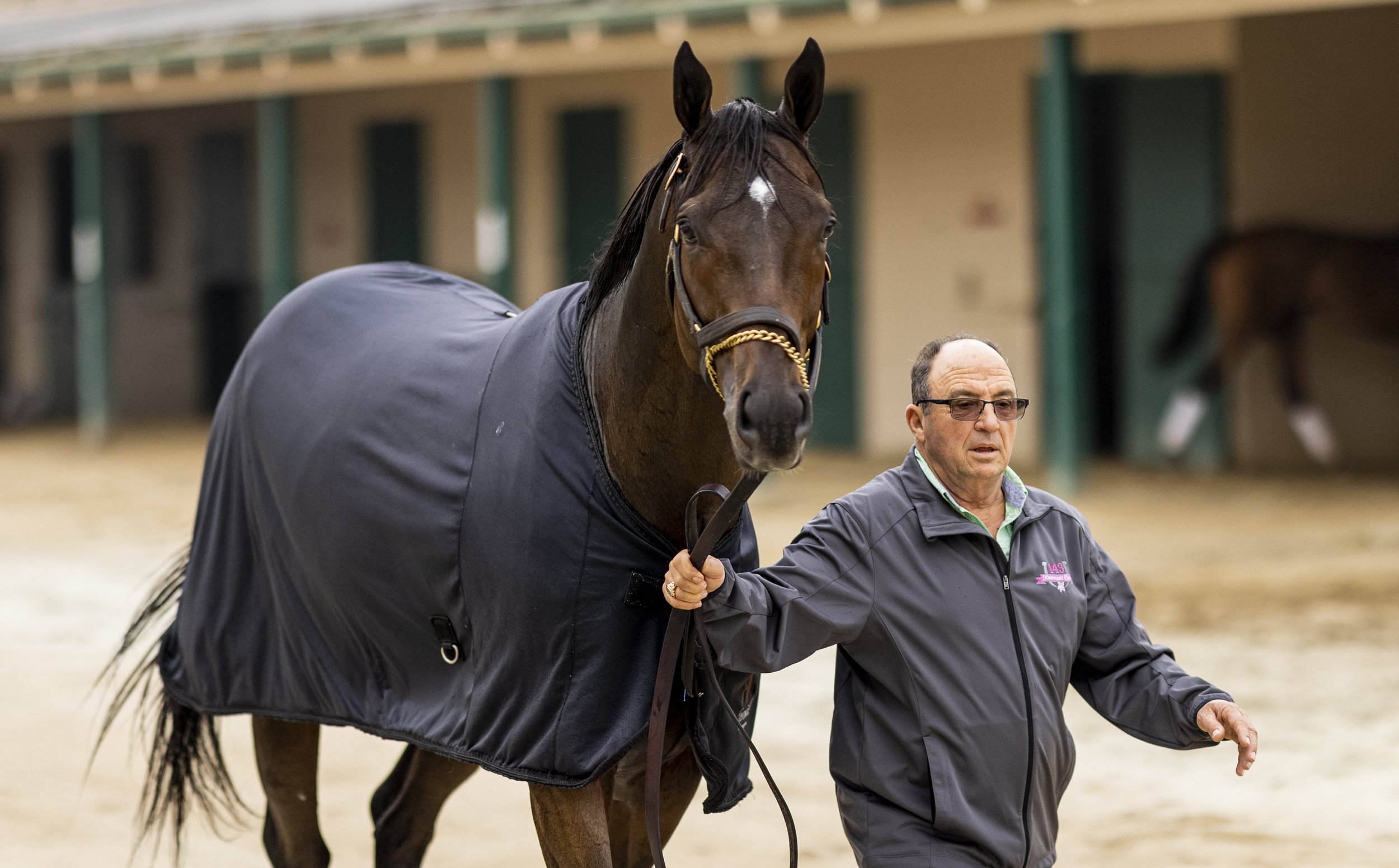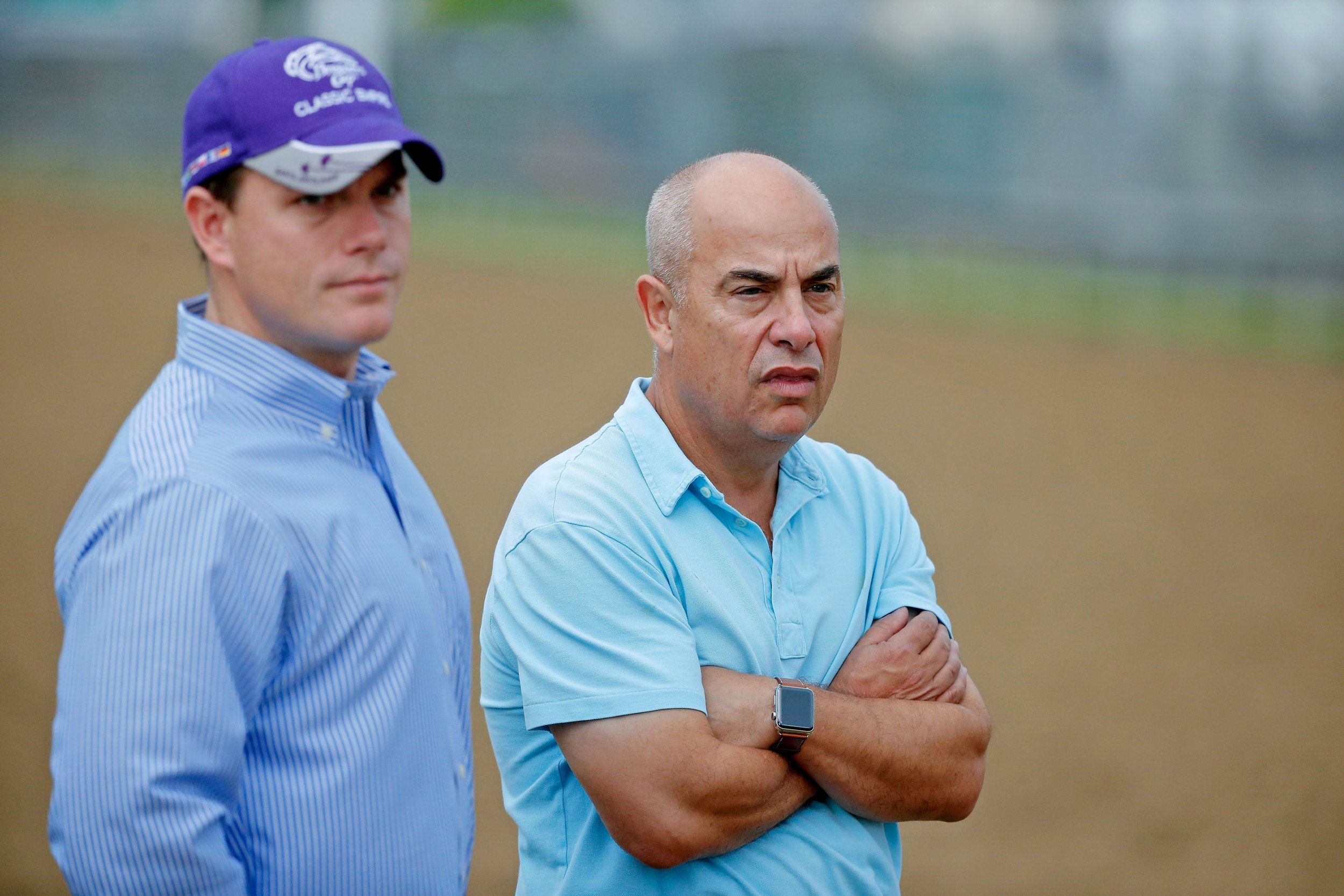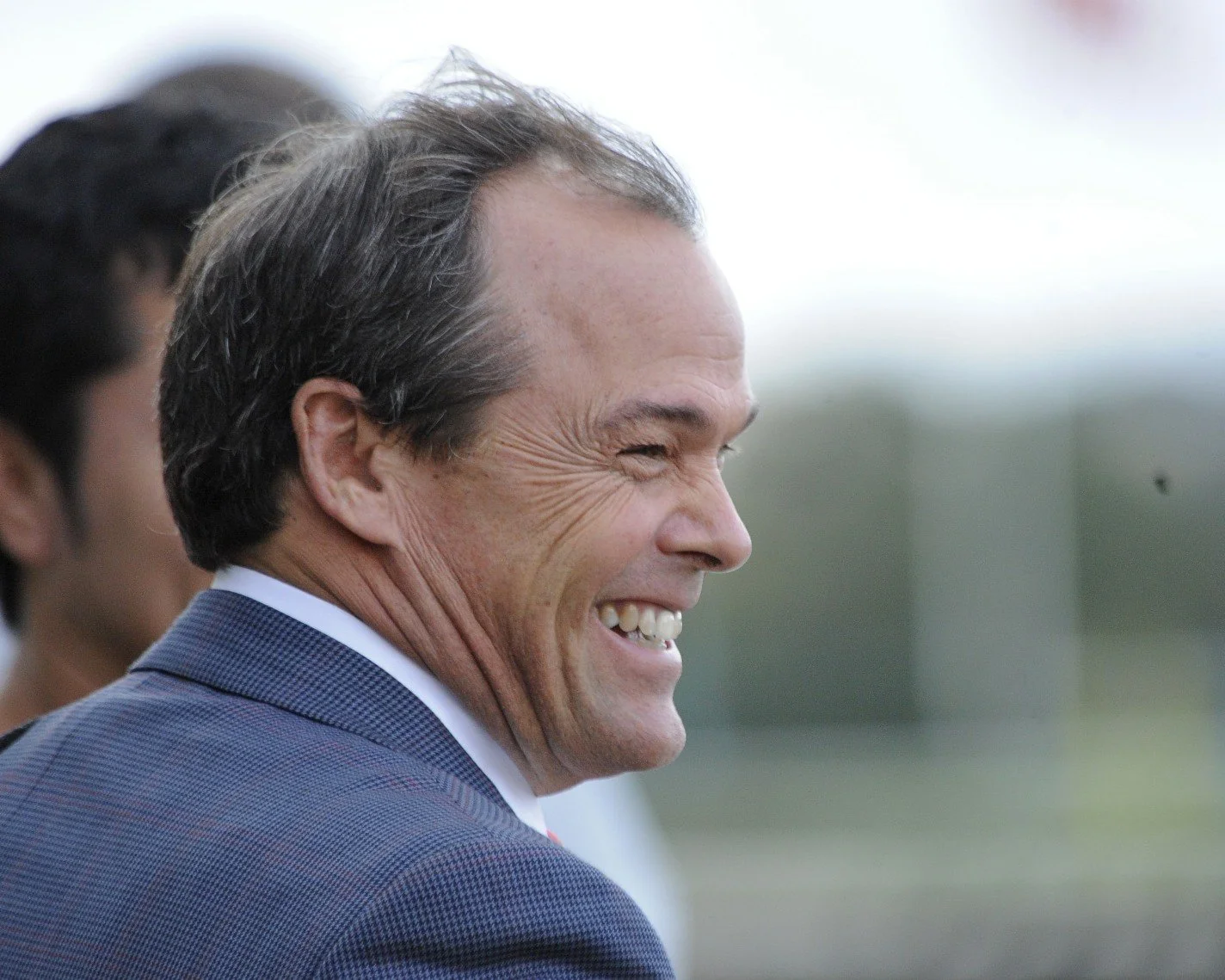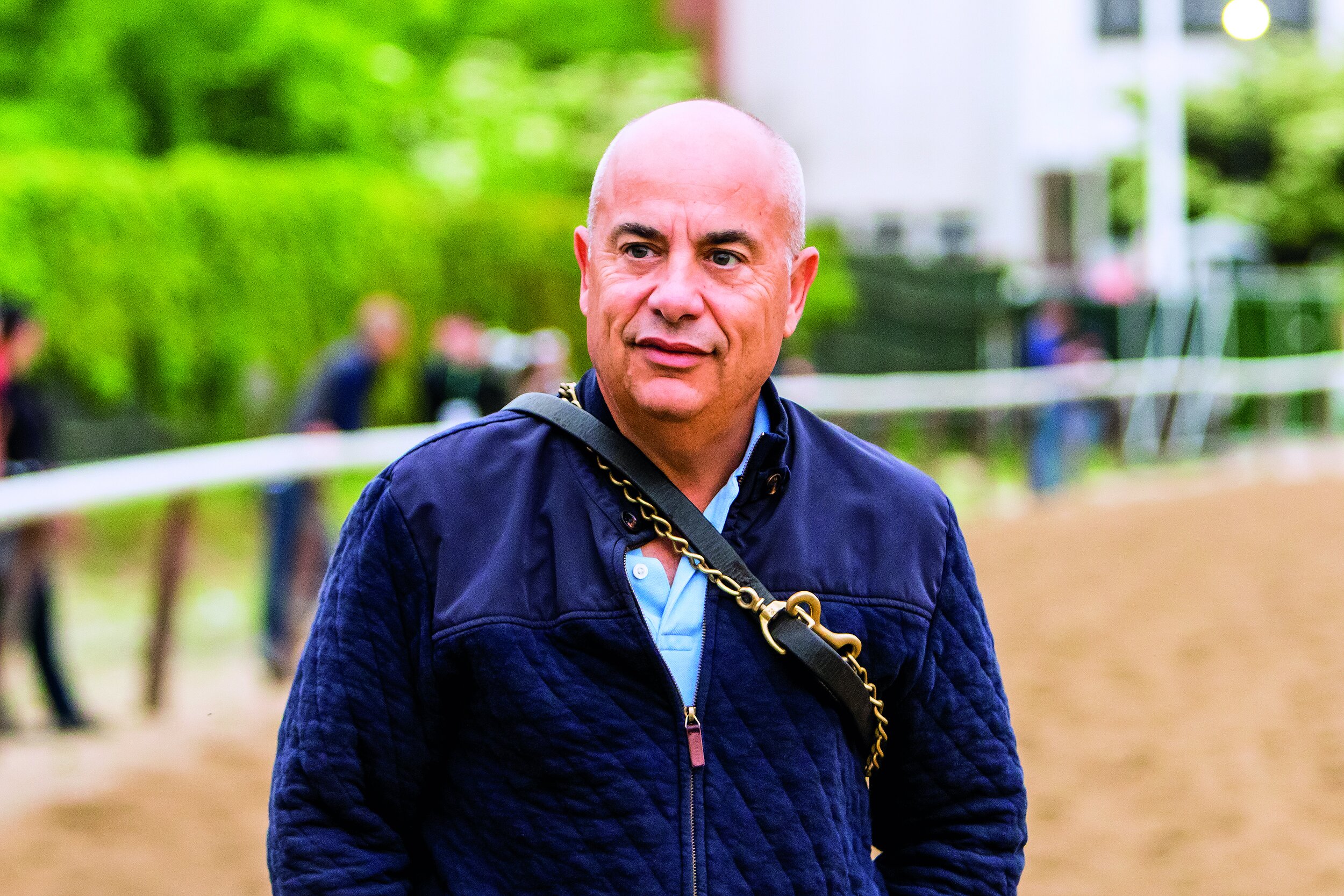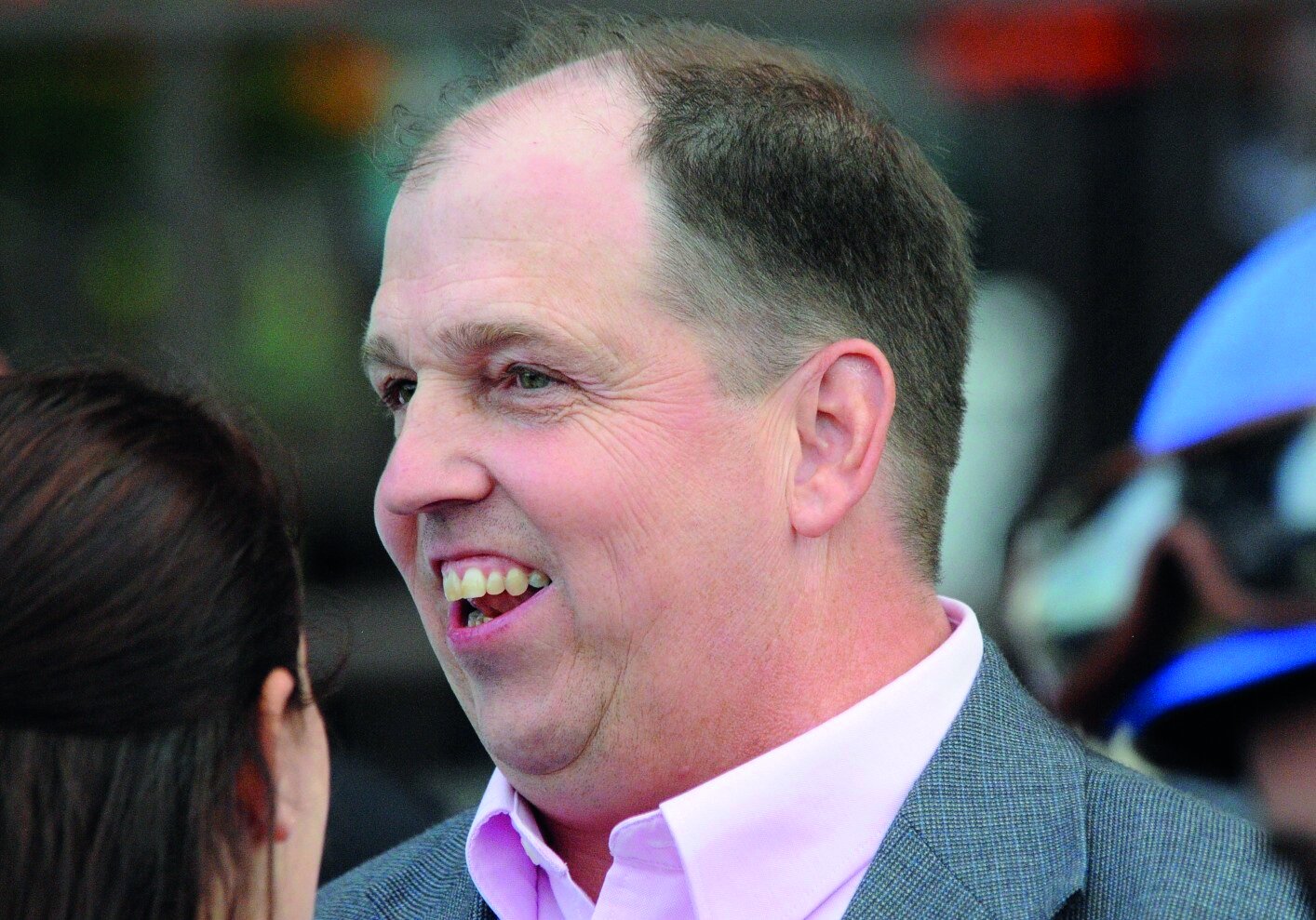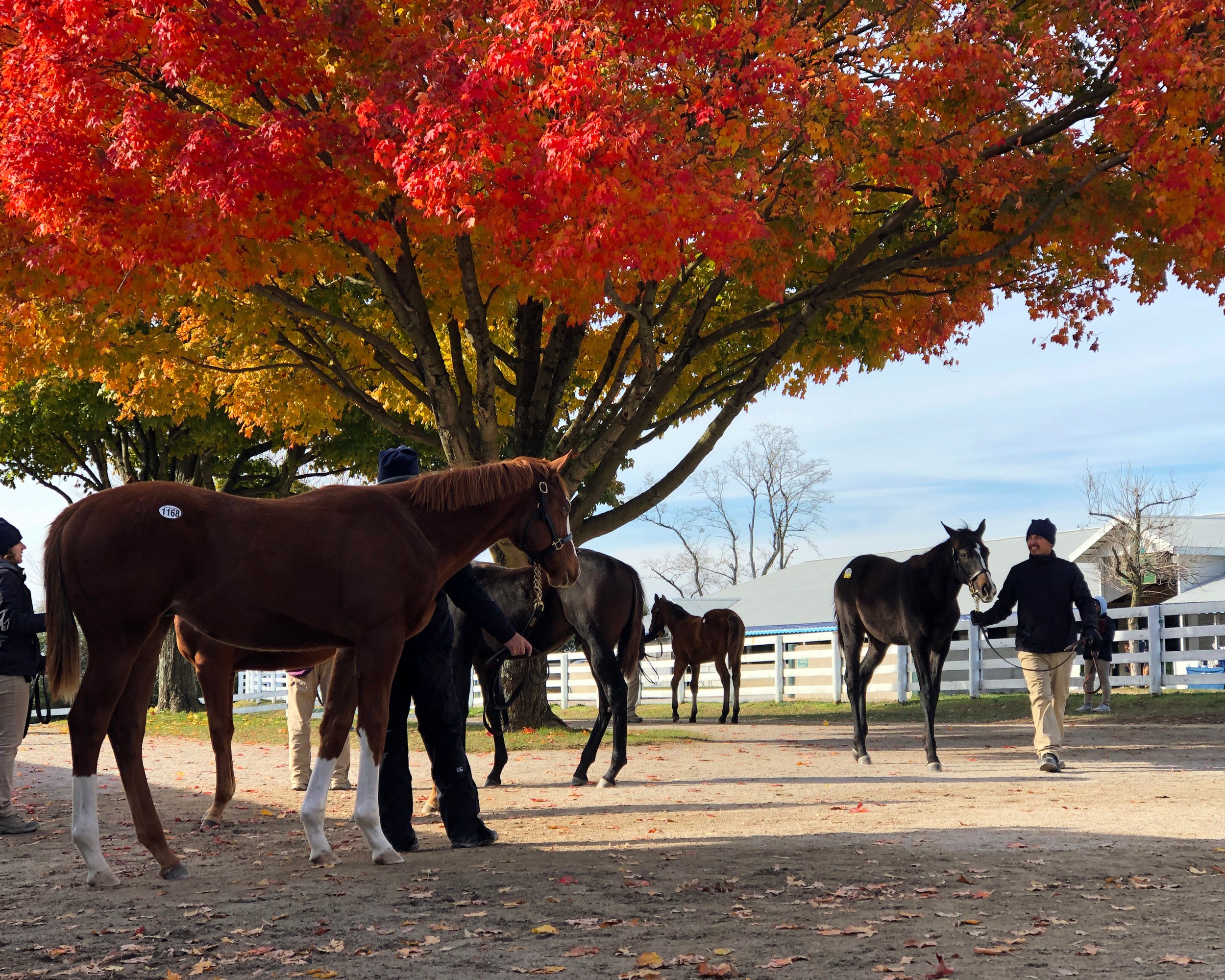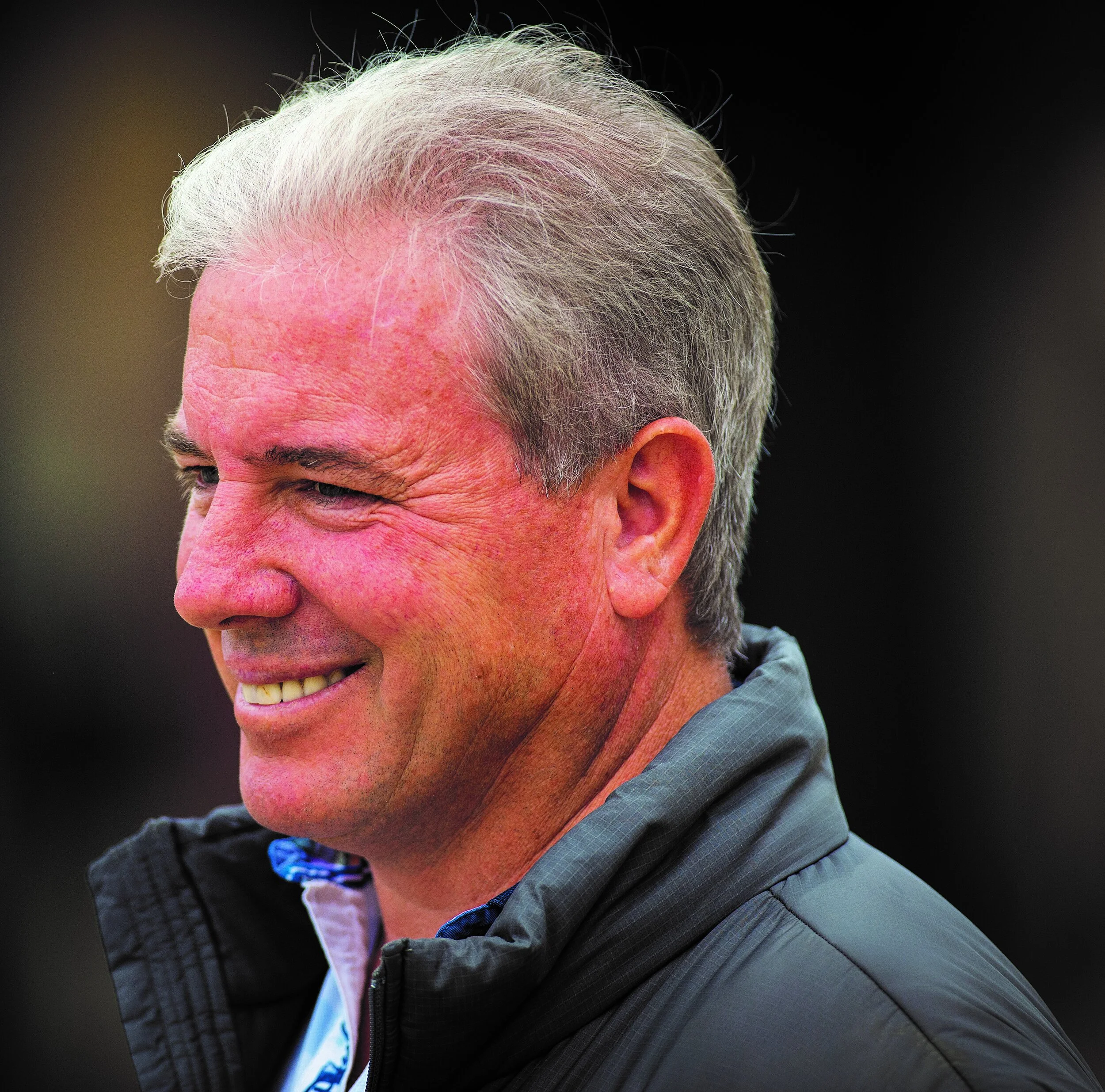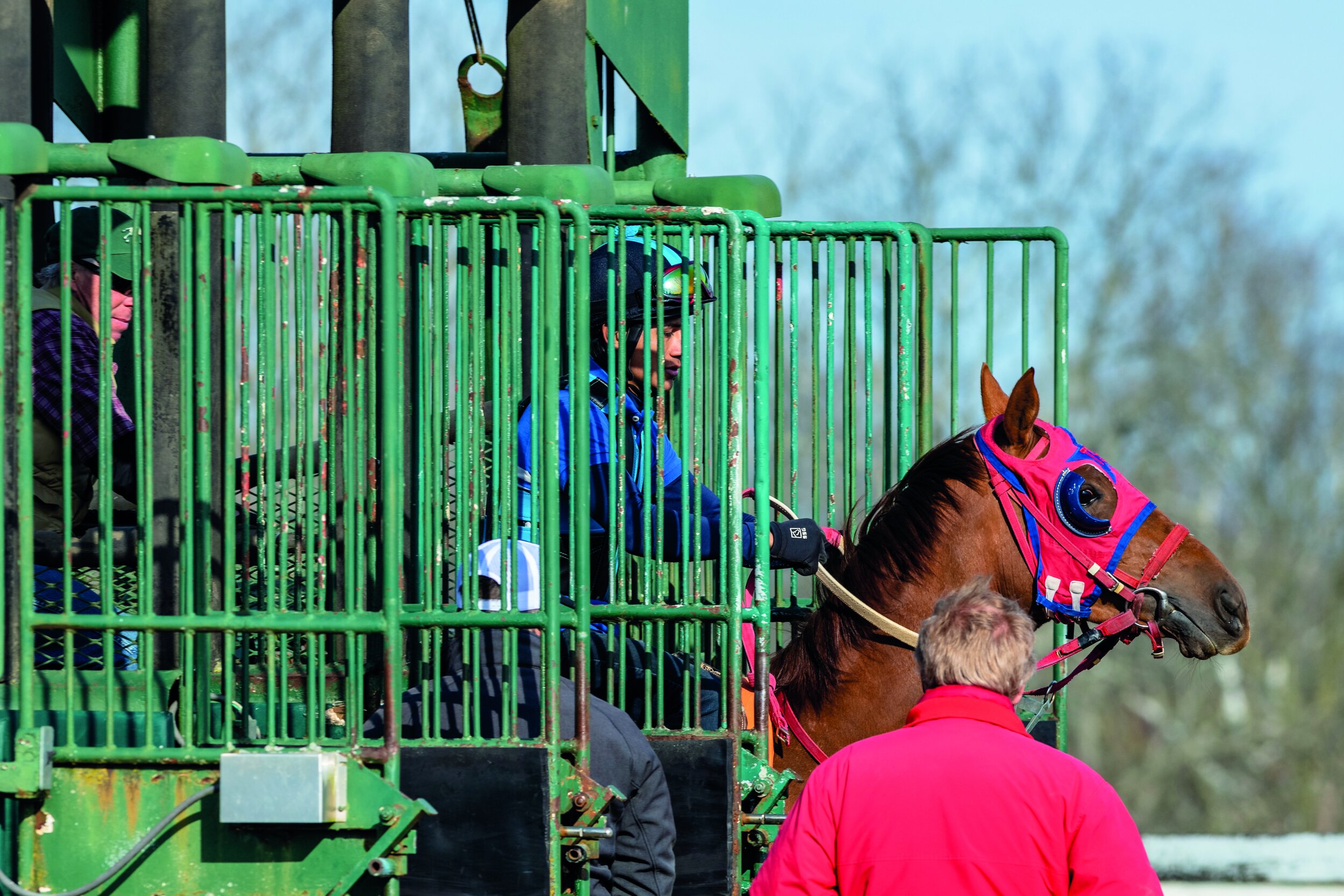Transitions - tips for training on synthetic and racing on dirt
“He not busy being born is busy dying,” to borrow from a Bob Dylan song. It has application to Thoroughbred horse racing.
Oh, there’s been dying—Arlington Park, Calder, Hialeah, Hollywood Park, Suffolk Downs and Golden Gate Fields to name but a few major tracks that have passed since the turn of the century.
But there’s rebirth, too. (The lyric above is from a song ironically entitled, “It’s Alright Ma (I’m Only Bleeding).”
The “bleeding” in racing, if not minimized, is way less than in the past. In its relative infancy HISA, the self-regulatory agency, has significantly impacted the use of illegal medication; racetrack fatalities are at a record low thanks to better track maintenance (along with med regulation); and still to be rebirthed in 2026 is a new Belmont Park.
For traditionalists, that pesky synthetic surface is still around. If there hasn’t been a rebirth with synthetic surfaces, it is at least on its proverbial feet in horse racing despite Del Mar, Keeneland, and Santa Anita laying then lifting it to return to dirt.
Belmont Park will include it with their dirt and turf courses with something vitally important: an infield tunnel enabling horses to reach all three surfaces with no interruption for horses crossing one track to get to another.
Training on synthetic surfaces for dirt racing is standard practice for many trainers and inherently practical. One, it’s all-weather—impervious, precipitation-wise, to everything short of a monsoon. Two, with the exception of freezes, it is now “all-climate.” No longer is it “tight” during morning workouts in colder temperatures and loose and sticky in hot weather.
Three, and maybe most critically, trainers have learned how to train on it for dirt races.
“Horses just skip across it,” said trainer Mark Casse, a proponent of synthetic surfaces. In fact, the ease with which they travel over it requires an adjustment from normal training on dirt. “When you train on dirt, the horses run in it. It's a solid where there is no rebound effect from the dirt. On the synthetic it actually bounces back a little bit.”
Richard Budge, a former racetrack trainer on four continents who is now general manager at Margaux Farm, a training center in Midway Kentucky, elaborated on Casse’s observation. “Without the ‘bounce’ on synthetics a horse on a dirt surface feels impact straight up to their knees and shoulders, which tires them and adds bone stress.”
“You have to train them a little harder, a little quicker, more often, in my opinion,” he added.
Casse expressed it thusly: “When things take less effort, then you have to do more than get them right, get them fitter.”
Even with a more stringent training regimen on synthetics as opposed to dirt, there are benefits beyond fitness. Trainer Eoin Harty, a self-described fan of synthetic surfaces, points out the obvious: “If your horse is sounder longer, it runs more often, it has a lengthier career.
“I think in general, dirt tracks certainly seem to have gotten better over the last four or five years, but in general, they take a toll on them.”
The bottom line is the synthetic surfaces of ten years ago are not what horses are training and running on now. Specifically, manufacturers of synthetic surfaces tweaked the composition of elements, reducing the slide that occurs when front hooves strike the racetrack surface.
The reduction is much less than in the past and much less than what happens on a dirt track. This is why a term often heard is horses run “over it.” Front hooves essentially don’t penetrate deeply into a synthetic surface like they would on dirt.
Also the surface needs minimal maintenance, far less than the frequent and necessary harrowing of dirt. It’s a flat base that doesn’t wash down toward the rail. There’s also minimal kickback so that track basically stays in place as opposed to dirt literally dug up and thrown back during races, producing a surface that is “cuppy” with divots.
The benefits with maintenance are immense and economical for trainers. “[On dirt] there's a break at six-thirty. There's a break at seven forty-five. And there's another break at eight-thirty,” said Harty. That’s an hour and a half of your daily training schedule that's lost.
“You're forced to hire more help just in order to get your horses out. It makes things more expensive, whereas, if you're at Turfway Park and you've got thirty horses, you can pretty much get them out to exercise in two hours with two exercise riders.”
Mark Casse, who is Florida-based, offers a more extreme example of low maintenance required with synthetics. “In one day, with two year old sales--working at seven o'clock in the morning and breezing two-hundred horses into the middle of the afternoon--you won't see a whole lot of track change.
“That would never be the case in Florida on dirt. You'd have to be putting so much water on it, we'd be having breaks every forty-five minutes. “
Perhaps not surprisingly, most horses like synthetic surfaces, according to Mark Casse. It would stand to reason both for the feel of it as they run and also familiarity. They all grew up running on grass, Casse said. Synthetic surfaces are the closest approximation to it.
“I would say that probably seventy-five or eighty percent of horses will move well over turf. You hardly find a horse that doesn't move better over the turf. I would say about the same number on synthetic, maybe eighty or ninety percent of horses will run on and like synthetics.” He estimated that probably only thirty to thirty-five percent of horses actually like running on dirt.
Richard Budge said the preference with most horses is immediately evident watching a horse travel over synthetic and how it differs from dirt. “You can tell the way that they move over the surface. Horses really spring over it.”
Budge, Casse, and Harty would tell you that while there are expectations in training, they should be confined to horse health. A horse race is still a horse race where anything can happen. The one hedge or angle that might possibly be a first timer to a dirt race who has trained on synthetics or better, raced over it before running on dirt.
“On the synthetic side, there's not a whole lot of kickback. There's a little bit, but it seems to settle right back where it came from. On a dirt track, of course, you’re going over it at thirty-five or forty miles an hour. When a horse puts his hooves down and pushes off, there’s a clod of dirt that was under his hoof that is now twenty feet behind them,” said Harty.
“With all that sand kicked in their face it's overwhelming for a lot of horses, and they just don't like it,” he added. “With synthetic, any kick back kind of bounces off and it’s not really much of a bother. Horses can sit mid-pack or at the back before making a stretch run.
“Look at the spread from first to last in a synthetic race compared to a dirt race. In dirt racing it can be up to thirty lengths, but with a synthetic they're more bunched.” Harty believes the difference in kickback between dirt and synthetic is the reason also for how horses finish.
Rarely will you see horses running five wide down the stretch like you will in races over a synthetic surface. The reason? They haven’t been deterred by heavy kickback.
One practice to familiarize a horse with kick back on dirt is to run them behind one or even two horses to feel and get cast-off to kickback.
The synthetic surface at the new Belmont should garner a lot of attention for its novelty as well as its effect on racing as a whole. “You'll see a big influx of Canadian horses going there for the winter to run,” Casse believes.
He envisions a circuit of Belmont, Woodbine, and Turfway. So, too, does Richard Budge foresee it with something added: a synthetic Triple Crown.
Recently he looked at a Saturday card at Turfway and noticed nearly every race had overfilled. That is a handicapper’s delight.
With the current Triple Crown, trainers like Casse and Harty aren’t shy about training at Turfway (a mere 94 miles away from Churchill Downs) on that track’s Tapeta surface. Rich Strike, the Kentucky Derby winner in 2022 trained at Turfway. Currently Eoin Harty has a Triple Crown series contender, Poster, training there.
It seems as if the bias against synthetics has weakened considerably over the last decade. One piece of evidence comes from Mark Casse.
“About twenty years ago NYRA had a special committee to look into synthetics. I think at the time, they probably would have done it, but they couldn't afford it.”
Casse remembered a trainer telling him, “‘We can’t do it. We have to worry about tradition.” He responded, “You’re not going to have to worry about tradition because you’re going to be history.
“I want to say about two years ago he called me and said, ‘You were right.’” Tradition hasn’t blocked the synthetic surface going in at Belmont.
“If you stand still, you get run over,” said Casse.
Horses will keep running no matter if there are fewer racetracks or fewer races. And they’ll do so on the best surfaces in the history of the sport—synthetic or dirt.
“He not busy being born is busy dying.”
#Soundbites - Why are the average number of starts and field size declining annually?
Article by Bill Heller
The 2024 Jockey Club Fact Book showed that the average field size run in 2023 races was 7.40, down from 7.59. Thoroughbreds’ average number of starts also dipped from 6.01 to 5.87. Back in 1990, the average field size was 8.91 and the average number of starts 7.94. Why are the average number of starts and field size declining annually?
Todd Pletcher
I think the number starts, in a lot of cases, is management. I think over the years trainers have become more conservative about how many starts horses have with more time between races. More rules about when you can train your horses may be a factor. And the foal crop is having an absolute impact.
Dale Romans
That’s a good question. It’s above my pay grade. I’d say the reduction in foals every year. Also, it’s a lot more difficult to run a horse. More horses are scratched by veterinarians.
Barclay Tagg
The horses just aren’t as hardy as they used to be. Justify, he ran six times and he’s one of the leading sires in the country. And he didn’t start until his three-year-old season. You can’t do basic therapy anymore. These horses are athletes and you need to take care of them. You’ve got to be able to train your horses. They make it really hard. You can’t pinfire your horses’ shins. You can’t blister a horse any more. Horses don’t even feel that. It’s about the calmest thing you can do. They’ve got the wrong people making these decisions.
Wayne Catalano
It’s very simple. The foal crop has been down for a long time. It should be 40,000 (In 1990, it was 40,333; last year an estimated 17,200). Obviously, it’s going to catch up with us. Also, you’ve got the new ruling body. It’s a different game these days. You have people coming up that don’t know how to take care of horses.
Brian Lynch
Is it the foal crop? That would be my answer to that. There’s always concern that the tracks haven’t been the best. There have been more breakdowns than I’ve ever seen. More to the point, it’s the foal crop.
Mark Casse
I think it’s pretty simple. I run over a thousand starts a year. I have to enter over 3,500 times to do that. I would have 50 percent more starts if there were races for me. That tells you. I’m lucky because we have options. I can look at different tracks. But I can have 15 horses in my barn with no races for them.
When I first started, they didn’t publish every trainer’s statistics. They’re all worried about their percentages. Their horses stay in the barn.
The other thing, in my opinion, the state programs have really hurt, and I’ll tell you why. Fifteen, maybe 20 years ago, I went to California, I never got a long maiden long race. The Cal-bred horses did. That’s another factor.
Ron Ellis
The truth is with HISA coming in and veterinary restrictions, we can’t run the horses as often as we used to. All the restrictions and all the veterinary requirements, including expensive scans we’re under now, are certainly one of the reasons. We have a lot more restrictions.
Karl Broberg
Golly, where do you begin? I was looking at the Fact Book last night, and what I was most concerned with was looking at foal crops by region. I began shaking my head. Every region is down. In the future, there’s only going to be racing in Kentucky and New York. It’s returning to the sport of kings. I think what’s missed, due to the economics, is that people are giving up on horses much quicker. That’s a huge factor. Also, there are fewer opportunities.
Tom Proctor
Wow. You would need more than a sound bite. I’d be forever telling you why. I don’t have a say in how this business goes. There are people who win a zillion races and their opinions don’t matter.
Following in Their Footsteps: Lessons in Business & Training Passed Between Generations
The story of horse racing is one of families. Usually, the conversations focus on the equine kind, sires and dams, and what the generations listed in each horse’s pedigrees bring to the athletes at the center of the sport. The human side of racing too features the age-old tale of family legacies as knowledge and experience gained by one inspires the next to join the fray.
Whether the name is Hirsch or Veitch, Bryant or Casse or Mandella, the training side of the sport has its share of families passing both knowledge and experience down to the next generation. Summers spent mucking stalls and caring for horses allow parents to share hard-earned expertise with their children, and, in turn, move them to follow in their footsteps. Their journeys to striking out on their own may mirror the ones the previous generation undertook, but the challenges that each face are ones that reflect the changing times within the sport.
The Mandellas
As the son of a blacksmith, Hall of Fame trainer Richard Mandella grew up with horses, seemingly destined to make his life about their care and training. He assisted his father Gene on their California ranch and learned to break and ride horses from an early age. Dreams of being a jockey turned into time in the saddle as an exercise rider and then years in the barn as a trainer, finding success with horses like Dare and Go, Kotashaan, Omaha Beach, and Beholder. When it came to his two children following in his footsteps, the California-based Mandella, who has been training for nearly five decades, found son Gary eager to join the family business, but the fatherly side of the Hall of Famer tried to dissuade his son from going that route.
“We were walking out to the parking lot one day, and I asked him, ‘What are you going to do when you finish school?’ And he looked at me and said, ‘I’m going to do what you do, Dad,’” Mandella shared. “I couldn't chase him away. I wanted him to get a real job. He didn't like the idea and worked for me.”
Gary, on the other hand, followed through with his father’s request that he go to college and even tried broadcasting for a time. “I feel very fortunate that people tried to open my eyes to remind me what else was out there, that I could look into something else and try this, try that,” the younger Mandella reflected. “But I knew before I turned 16, that it was going to be hard to get away from [training].”
His foresight about that career choice came from years growing up with horses right outside his window. The family had a small farm where his dad would send horses for some downtime, meaning that the younger Mandellas were working with and caring for these athletes from their earliest years. “I woke up, and every window that I looked out of my bedroom, I saw horses,” he remembered. “Just helping take care of them there and having the opportunity to be around them all the time made [me] want to be a part of that.”
Those experiences working with his dad and his horses on their family property as well as on the racetrack brought Gary Mandella the background he would need when he decided that a trainer’s life was for him. “My father’s always been more of a lead by example than make a big speech kind,” the younger trainer observed. “He showed me, expected me to pay attention, and was always clear about what the priorities should be.”
The Bryants
George Bryant started his career in the saddle, riding Quarter Horses for more than a decade, but, when age spelled the end of that career, he parlayed his lifetime with horses into training. Based in Texas, he worked first with Quarter Qorses and later Thoroughbreds, retiring in 2021 as son George Allan Bryant faced a fight for his life.
Diagnosed with stage four oral cancer, the younger Bryant battled through surgery, chemotherapy and radiation, coming out of the experience determined to follow through with his goal of becoming a trainer like his father. He had delayed starting his career until the elder Bryant stepped away, instead working as a racing manager for HDT Allied Management, hosting the Horse Racing Destination podcast, and serving as a member of the Texas Thoroughbred Association.
His decision to open his public stable and start his training career was a long overdue one in the eyes of the elder Bryant: “He’s been ready for quite a while now, [but] it was up to him to make the decision. He really didn’t want to go into training until after I retired.”
“I didn’t want to compete with him,” George Allan Bryant shared about his decision to defer his training career. Though he did not start his own stable until 2022, the younger man watched and learned from his father, always accompanying the elder Bryant to the barn and riding horses at an early age. This hands-on education prepared the younger Bryant so well that he passed his trainer’s license test on the first try, and then got on social media to share that he was ready to open his stable. He got his first client, Mike Powers, not too long after that.
Now, his barn at Sam Houston Race Park in Houston counts 20 horses, with the elder Bryant by his son’s side as his assistant, building on the determination that got him through his fight with cancer and pushing him forward.
The Casses
Mark Casse’s own roots in racing come from his father Norman, one of the founders of the Ocala Breeders’ Sales Company whose Cardinal Hill Farm in Marion County, Florida, gave Mark hands-on time with horses from his earliest years. As a 12-year-old boy, the future Hall of Famer accompanied his father to the 1973 Kentucky Derby and decided to become a trainer after watching Secretariat’s record-breaking performance. It was during those formative years that he learned what it took to become a trainer.
“You learn from many places. I was running my dad’s training barn when I was 15,” Casse recalled. “I learned from grooms, from hot walkers, from exercise riders. You learn because you love it.”
In 1979, six years after that fateful encounter with Secretariat, Casse got his first win at Keeneland in Lexington, Kentucky, and his first stakes win at Sportsman’s Park near Chicago at just 18 years old; but success at the highest level was still to come. In the late 1990s, he moved his base to Woodbine in Toronto, Ontario, and added racing north of the border to his resume. In the meantime, his oldest son Norm was growing up surrounded by family in the sport, with both of his grandfathers and then his father all involved. But his love came more from his childhood in Louisville, Kentucky, growing up with all things Derby.
“I just fell in love with horse racing just because I was here and how much the Derby meant to the community,” Casse shared. Much like his dad, Mark’s encounter with Secretariat, Smarty Jones’s Triple Crown run in 2004 spurred the younger Casse’s desire to become part of the sport: “There was just something about that horse in particular that just really excited me, and it was [then] that I decided that’s what I wanted to do.”
The younger Casse was in his early 20s when Smarty Jones came into his life, playing baseball at Bellarmine University with an eye on what was next: “I figured that I wasn’t going to be good enough to be professional by any means, but I always thought maybe I would be a coach.” After graduating from Bellarmine, Norm joined his dad’s stable in 2006, getting an in-depth education about training horses after years where his focus had been outside of racing.
“I was behind the eight ball when I first started,” Norm observed. “The intention was always going out on my own, but I knew it was going to take at least 10–12 years before I was going to be comfortable and ready.” Before he went out on his own in 2018, the younger trainer managed strings at American racetracks like Saratoga and Keeneland while the elder Casse focused on his Canadian stable—experience that mitigated the growing pains other trainers face when starting their own stables.
With his first Kentucky Oaks starter, Southlawn in 2023, Norm Casse continues to build on the lessons learned working with his Hall of Fame father and finding success in his own program with horses like Pretty Birdie and Rhyme Schemes in his barn.
The Challenges of the Business and Sport
For the Mandellas in California, the challenges are two-fold. A declining population of horses and the rising costs of maintaining a stable make that circuit a tough place to race. “There’s just [not] near the number of stables here as there used to be,” the elder Mandella observed. He let Gary know that the option to leave California and train elsewhere was there, but “[Gary] decided to stay put.”
According to the younger Mandella, the purse money that tracks in California have to offer has not kept pace with what tracks backed by casinos have to offer. Because of that, plus the higher cost of living in the state, the circuit lacks a middle. The state’s racing scene is still strong at the top, as evidenced by the success of West Coast horses coming east, but the inflated prices of real estate and feed make it harder to maintain a barn of allowance and claiming horses.
The younger Mandella has his own stable but shares a barn with his father as well. The two work together, as the Hall of Famer has scaled back his operation, happy to have his son on hand to help guide both stables through the implementation of HISA (Horseracing Integrity and Safety Authority) regulations and the growing dependence on technology. “I’m lucky I have had this barn for 49 years, and I’ve got some great people that work for me,” the elder Mandella shared. “Having him along with it makes it possible for me to get through all of this new stuff.”
Technology makes it easier to communicate with owners and to work with larger ownership groups like My Racehorse, which the Mandella barn has found success with; but it also opens up another set of challenges for the sport. As Mark Casse pointed out, social media has made sharing information, like win percentages, easier, which can be a double-edged sword.
“Everybody wants you to win at a high percentage, and that’s a challenge; and then any little move, any little thing that goes wrong or right shows up on social media, which is tough,” he observed.
Additionally, social media has also led to continued scrutiny from many different directions, especially in light of the recent charges against Jorge Navarro and Jason Servis. “It’s the reason why I have pushed so hard for HISA,” Casse shared. “I want my kids who choose to make this their business to be able to do the right thing and to be on a level playing field.”
For the father-son Bryant team, the biggest difference between starting in the 1980s and in the 2020s is the cost of labor, supplies, and the horses themselves. “It’s gotten to be pretty expensive,” the elder Bryant observed. “When I started, a bale of hay was probably $1.50, and now it’s $20.”
To succeed, “you got to be pretty business smart, and you have to have owners that pay you good,” he said, a sentiment echoed by Gary Mandella.
“This is one of the few businesses where you post bills for services rendered as opposed to pre-billing,” the trainer observed. “When you’re operating with a high overhead, it can be stressful. You have to manage that stress so that you’re just taking the horses in consideration as individuals.”
Balancing the needs of the horses with the needs of the business remains a vital part of the job of horse trainer. While each considers what their horses need, they also need to look beyond the day-to-day care and maintenance to the evolving issues of bringing both new owners and new horses to their barns.
The Search for the Next Big Thing
High up on the list of challenges for trainers is bringing in both new owners and new horses to their barns. The advent of social media as well as the rise of partnerships and microshare syndicates means that the way that the sport conducts business has changed and the men and women who make their living in it must adapt as well. While the opportunities to work as a private trainer for one or two owners may be fewer, these father-son tandems must navigate the continuing evolution in both recruiting owners and finding horses to train.
For George Allan Bryant, social media has allowed him to reach potential owners in ways that his father could not in earlier decades and has enabled his nascent barn to grow. “I can advertise my horses and business much easier,” the younger Bryant shared.
Hall of Famer Mark Casse has also seen a change in this era of instantaneous communication. Over his 40-year career, he primarily relied on phone calls to keep his clients informed, yet the 21st century has taken the phone to a new level. “The way we communicate now is much different. Now I would say that 95% of owners get updates when their horses work or when they run,” he observed. “I get a lot of texts and emails and those kinds of things. I still have lots of phone calls, but it has definitely changed.”
Alongside the changes in how owners access information about their horses and potential trainers, the rise of syndicates like MyRacehorse and Commonwealth, both of whom boast Kentucky Derby winners in Authentic and Mage, has changed the sport, opening up opportunities for more people to get involved in owning horses, but also helping to mitigate the rising costs of owning and training horses. That also leaves racing with two distinct groups calling the shots.
“I feel like the game right now is moving toward you can either afford to have all of your horses yourself and call all of your own shots, or you need to be a part of a big partnership where there’s truly no stress; you bought your piece, and everybody else handles everything,” Gary Mandella shared. “They tell you where to be, where to show up, and you can either make it or not. It’s all handled.”
Though such new approaches to ownership open the sport up to people who might not have been able to participate otherwise, it does lead to one trend that has troubled the sport over the last three decades as the majority of the sport’s highest earners tend to be in the barns of only a few.
As the younger Mandella pointed out, “Part of the selling point of these big syndicates is you can’t get in with Bob Baffert if you buy a horse yourself for $20,000 as a yearling; but if you spend $20,000 on share of more expensive horses, then you get access to Baffert or Brad Cox or Todd Pletcher. And again, now too many of the horses are in the hands of too few, and that hurts.”
For the elder Casse, these ownership groups bring a definite upside to the sport: “It would be my opinion that syndicates have introduced many people to our sport. As things go on, some of them feel the need to go ahead and branch out and do a little bit more on their own. I think they’re great for our sport.
“There’s so much to learn about our sport, and if you try to get into it on your own, it’s very difficult. But those syndicates are good for learning.”
In the case of the elder Mandella, working with MyRacehorse has streamlined his responsibilities, allowing him to step away from attending sales and focus more on selecting the horses he will train. “The owners all tend to have bloodstock agents and managers now,” Mandella shared. “I try to not interfere with that and just hope they send me some horses.”
Syndicates like MyRacehorse will bring Mandella and other trainers out to their bases in areas like Aiken, South Carolina, and allow each to select the horses they would like to train. In the case of the younger Bryant, he even started his own syndicate, Passion Racing, to offer potential owners the chance to invest in horses he trains. He also works with his owners like Adam Blick of Blick Racing, attending sales and offering his feedback on potential runners.
For trainer Norm Casse, his focus is on the two types of clients he works with, those who buy from the sales and those who claim horses. When it comes to buying horses, “I have professionals that represent me at the sales to find new horses, and I trust their opinions.” On the other hand, he is more involved with the selection of the horses he claims. “I have certain types of horses that I like, and looking at past performances, I can decide which horses would be successful in our program,” he shared. “I like claiming horses using common sense, and it’s really as simple as that.”
When it comes to adding clients and horses to their barns, the elder Casse has not seen as much of a change in recent years. Rather than actively recruiting, “I think most trainers just let the results speak for themselves and hope that owners will come,” he said. “There’s so much more information out there for people to gather, but you still get a lot of recommendations from other owners.”
Instead, he makes the best of the sales, working with clients like Charlotte Weber of Live Oak Stud to pick out potential racers. “I like it because if I don’t do a good job, get good horses, the only one to answer to or be upset with is myself,” the long-time conditioner shared. “I enjoy picking out horses, and I have a real good memory of the horses I’ve trained; and I try to duplicate that.”
What the current trends in ownership and horse selection create is a challenging environment for the sport as a whole, where success at the top levels mirrors what’s happening in other sports. As the younger Mandella observes, “One of the great selling points of horse racing is that it is truly the only major sport where you can try to win a championship without spending the most money. There’s such a strong concept in baseball, basketball, football and hockey, where somebody comes in and either increases their budget or buys a team and changes the concept.”
“None of these sports have a story like California Chrome or Real Quiet or Sunday Silence—horses that were bought for so little money and were able to take down horses that were seven figures and owned by some of the richest people in the world. Where else can you partake in that?”
Echoing his son’s thoughts, Richard Mandella sees a need for racing to restore a balance between the business and the sport: “that part needs to be addressed and always paid attention to so that we don’t get too far to the business side and get too cold about it. This is meant to be an escape for people in real life working in offices, running businesses, and having all of those headaches. Racing is supposed to be a way to get your mind on something else and have some fun.”
“The better we can make the sport look, the more chance we’re going to get people to come here,” he observed.
The evolution of the sport in the era of social media and syndication add new demands to their jobs, but these father-son tandems remain committed to the sport they have loved from their earliest days. Though the pressures of training these equine athletes and maintaining the business side of the game may test these conditioners, they are all open to the idea of their own children deciding to join their ranks.
Advice for the the next generation
George Allan Bryant’s advice is to stay on top of the bills and expenses that come with caring for these athletes and maintaining the communication necessary to work with the owners. “You’ve got to take care of your bills,” he observed. “But this is also a people business as much as it is a horse business. Your phone is always on.”
Norm Casse too echoed that aspect of the job: “The main thing I learned is how to deal with clients and owners. I never have a problem communicating with the owner because my whole life, I’ve been listening to somebody do it.” With apps like The Racing Manager, Casse and other trainers can quickly communicate with everyone associated with a horse, another avenue for keeping their clients in the know as their horses develop and progress.
For Mandella, the key to bringing in a new generation to the training business would be to show his son the ropes much as his father did. “I would warn him that this is a business that has economic risks to jump into for sure,” he said. “But also, I would give him as much support as I possibly could.”
At the center of all six trainers’ time on the track are the equine athletes that make the demanding schedules and daily stresses worthwhile. For all three families, the focus remains on the horses and their care and development, all seeking not just success on the racetrack but the connection with the animals in their care.
“You’ve got to really know your horses and pay attention to all of the little things,” George Bryant shared. “Take excellent care of your horses. The better care you take of them, the healthier they’ll be and the faster they’ll run for you.”
#Soundbites - What would you do if you weren’t training Thoroughbreds?
By Bill Heller
Mike Trombetta
Mike Trombetta
That’s a heck of a good question. I’ve been doing this so long, I couldn’t tell you. I really don’t know. Construction and demolition, that would be an option. I did that for 15-20 years, but I was doing this at the same time, too. I like this a heck of a lot more.
John Kimmel
John Kimmel
There are two things besides horses I love: snow skiing and deep sea fishing. I’m in Utah, skiing right now. I’m not that far from retirement. I’ve been doing this for 40 plus years. When things tail off, if my business slows down, that’s what I would be doing.
Mark Casse
Mark Casse
I’ve thought about that many times. Probably real estate. I just think it’s a challenge, and the rewards are great. That’s what I would probably do.
Jeremiah Englehart
Jeremiah Englehart
Oh, wow! I’m not sure. I’ve been doing horses since I was so young; I always wanted to be a trainer. I guess I would like to do something with football. I’ve always had a passion for football, maybe coaching or working with kids. I’ve always been a fan in sports. I played sports in high school. That’s something I would like to do.
Craig Dollase
Craig Dollase
I’ve always wanted to pursue sports. I’m a big sports advocate. I’d go for something in the sports world, not physical—something to help people in the sports world. I have a cousin who was actually the trainer for the San Francisco 49ers. I had an in. I could have gone in that direction. But I went to work for my dad, and now I’m a trainer. It turned out pretty good.
Tony Dutrow
Tony Dutrow
You know, at 64, I’m so much still in love with horses and horse racing. There will never be anything else for me. But if I would have never done horse racing, I’d try my hand at real estate. Because that’s a challenge.
David Donk
David Donk
A good question. Later in life, what interests me is management—racing management. But I’m lucky to be doing something now I love.
From Sales Ring to Racetrack - Different opinions on bringing on the young racehorse
By Ken Snyder
The story is both funny and telling, especially as it comes from a legendary Hall of Fame trainer, courtesy of a newly minted Hall of Famer, trainer Mark Casse. Working for the late Allen Jerkens in his late teens and early 20s, Casse remembers the venerable “Giant Killer” of upset fame saying he wasn’t going to do anything with his two-year-olds because he wouldn’t have to worry about shins, sickness and all the rest. “I’m not going to train them at all at two,” Jerkens told Casse. A year later, commenting on the now three-year-olds, Jerkens said, “They did all the things they would have done at two.”
Not even a trainer as great as Jerkens can predict (or postpone) what will happen with two-year-olds, either in health or performance.
They all begin, for the most part, with fall yearling sales, most notably the August Fasig-Tipton sale in Saratoga and the Keeneland and Fasig-Tipton sales in Lexington in September and October.
Casse compares it to the NFL draft with one enormous difference: football players have a body of work—college football—to scrutinize. With horses, it’s pedigree, eye and instinct. A seven-figure Book One yearling might make the proverbial “cut list,” never even reaching the racetrack. A sale might also yield a Seattle Slew who sold for a relative pittance—$17,500 in 1975—and who etched himself into racing history as both a Triple Crown winner and legendary sire.
The “pre-season” for yearlings, to borrow again from football, is sales prep. Ninety days before a sale is the ideal time to begin prepping yearlings, according to a 10-year veteran of Thoroughbred consigning, Sarah Thompson, now an equine analyst for Eclipse Bloodstock. The minimum can be as little as 30 days.
Good looks can mean gold, and that is a variable with young horses that can be controlled somewhat. For a dark, rich coat, most yearlings (except for a few not keen on being outdoors all night) stay in the barn through summer months till seven in the evening when they are turned out into paddocks for the night. Sun can bleach coats, especially tails. (The few horses kept inside do get turn-out in the mornings but are brought in before the afternoon sun.)
Baths and grooming are daily, and as sales dates near, it ramps up with curry-combing to remove dead hair and application of hoof conditioner to improve appearance and strengthen hooves.
Conditioning is literally conditional as yearlings are not broken at this point. “There’s a lot of hand-walking. We also have automatic walkers,” said Thompson. Swimming is part of the regimen as well. “The idea there is you get the condition without the impact on the joints and bones,” she added.
Diet is generally the same for all yearlings. How a horse puts on muscle and weight (or doesn’t) and the horse’s body type can mean a tweak either to more nutrition or less.
There is little to prepare yearlings for a sales environment except for schooling on how to stand to show off conformation. The pose is standard for all horses but must be taught: left front leg forward, right slightly behind; left hind leg back, right hind slightly in front.
One surprising factor to horse sales has nothing to do with the horse, according to Thompson: “Having some of the best showmen on the grounds show [that] your horse can make you or break you. A good showman can move with that horse. Quiet hands are always a good thing, and honestly, it’s sort of the rapport between a showman and a horse.”
Once sold, it’s off to training centers and farms to determine if the yearling is worth what it cost.
Mark Casse
Casse operates his own training facility in Ocala, Florida—something he considers a huge advantage to his racing stable. Because of his success on the racetrack (career earnings are over $192 million and over $8 million in 2021 alone at the time of writing), he attracts a variety of owners, some of whom don’t have the goal you would expect: a Kentucky Derby winner. “I find out what people’s goals are. If your goals are to just have fun and win some races, then you go out and buy a speedier kind of horse that you can get ready earlier,” he said. “They’re not as expensive.” Others like John Oxley spend more, hoping for a Derby or Kentucky Oaks horse.
For a trainer of Casse’s stature, it is surprising that he also trains for one-horse owners who have paid as little as $5,000 for a horse. “I seldom turn somebody down as long as they have a passion for racing.”
Wesley Ward has built a Hall of Fame-worthy reputation with yearlings. His career win rate with two-year-olds is 24%, and at the time of writing, it was 33% for 75 starters this year. His success at Royal Ascot with “babies” has made him literally world famous. “I’ve won 12 races over there, and I think eight are two-year-old races,” he said.
He confirms what Casse says about owners’ goals. “Most of our horses are sprinters. The owners and stable managers tend to be giving me them,” he said. Ward might be minimizing accomplishments, however, as his overall win rate for horses of all ages is near the top for all trainers, a more-than- respectable 22%.
Wesley Ward
Ward isn’t protective of any “trade secrets” to account for two-year-old success. Winning is largely a matter of getting out of the gate well, for races run over distances as short as four-and-half-furlongs. “Most of my [exercise] riders that go to the gate are ex-jockeys,” he said. Again, he might be exercising excessive modesty when he said, “It’s not the trainer, but the person on their back.”
He does say he spends a lot of time “just getting the horses not scared” in gate training.
Ah, the gate—what Ward called the “big scary monster—this apparatus that we’re locking them up in.”
Everyone has their methods for gate training and, as any racing fan knows who has watched a horse balk or worse at either entering the gate or staying calm till it opens, nothing is foolproof. At his training center, Casse positions his gate where every horse every day must walk through it going and coming to the track. “That way it’s not something new to them,” he said. “After we do that for a couple of months where they’re used to it, then we move it over and change positions with it.” At that point, they go through a typical progression of having back doors closed and then front doors before breaking from the gate.
Travis Durr, owner of Webb Carroll training center in St. Matthews, South Carolina, employs a “monkey see, monkey do” principle in teaching gate work for yearlings as well as training in general. Like most every trainer of yearlings, he introduces gate work early but only a “few times a week,” unlike at Casse’s training center. Yearlings will follow a pony through initially.
An alpha male or female who will lead the pack takes it from there, showing the way for others. “If you’ve got 10 out there, you see which ones kind of want to be the boss, and which ones kind of want to lay back.”
Webb Carroll is known for exercising large sets with as many as 16 riders at work, depending on the time of year. “They’re used to being out all together. If you have a problem horse, it just makes it easier. They see all the other horses doing something, so they kind of fall right in. It’s a lot easier than if you’re getting just one to go out there.”
It is out of the gate, of course, where Thoroughbreds can earn fame and fortunes for owners. Methods in getting yearlings up to a three-eighths breeze vary between training centers and trainers. For Casse, the goal for a horse's first breeze will be 45 seconds or 15 seconds per eighth for a fall, two-year-old starter.
“A lot of times, they’ll all go in 45, but you can tell which ones it takes more of an effort to do that. That’s how they first start separating themselves.”
For Richard Budge, general manager of Margaux Farm in Midway Kentucky and former farm trainer for Winstar Farm, the first breeze will be a short sprint over a single eighth of a mile. “Then we take them up to a quarter [mile] and then three-eighths.”
Budge also separates the yearlings into early, middle and late groups. “The late group may be horses that may need a little more time or have a physical issue, so therefore you push them to a later group to break. I say the early group would obviously be the horses with a January, February, March birth date—that look physically ready to go right on with.”
Like Casse, the stopwatch is not as important to Budge as the way the horse goes about it. “If they’re doing it easily as opposed to flat out, that would be more important,” he said.
Margaux is a European-style farm, featuring a slightly uphill one-sixteenth mile straight with a Tru-Stride synthetic surface. Budge, an Englishman who has trained there, France, Brazil and the U.S., believes the combination of surface and straight track keeps yearlings more sound. A turn at the top of the straight does teach young horses to change leads.
Considering that two-year-olds are the human equivalent of 13-year-olds—arguably the toughest age for parents and teachers—trainers like Casse and Ward embrace the task of getting yearlings to the race track. Ward, in fact, expresses a preference for them. “This is what I love to do, especially the younger horses. This is what really excites me.”
And that’s a good thing—something with which Allen Jerkens might not agree…
When is a win not a win? Trainer Mark Casse has a surprising perspective on this.
First of all, his proficiency with two-year-olds is easily overlooked. His 2021 win rate with two-year-olds is 21%, and his career earnings with them are over $52 million compared to Wesley’s Ward’s career earnings of $28.3 million for the first-year starters. Most interesting, perhaps, is career earnings per start for Casse (at time of writing): $11,596 compared to Ward’s $11,065.
Success with two-year-olds is largely ignored but also improbable, considering his approach to “baby races.” “Never is it my goal to win first time out,” he said. “For the most part, it can be one of the worst things that can happen to a horse.
“A lot of times, what happens is we have a horse break his maiden first time out; and next thing you know, he’s running in stakes. At some point, no matter how fast you are, there’s going to be somebody faster than you. If you have a horse that knows nothing but to be on the lead, what if he breaks a little slow? What if something happens? I tell all my riders, the first time they ride a two-year-old for me, I’d rather be a closing fourth than a dying third. I like my horses to learn to run-by horses.
“Now, that being said, if a horse breaks running, and breaks one or two on top, they’re going to go with it.”


